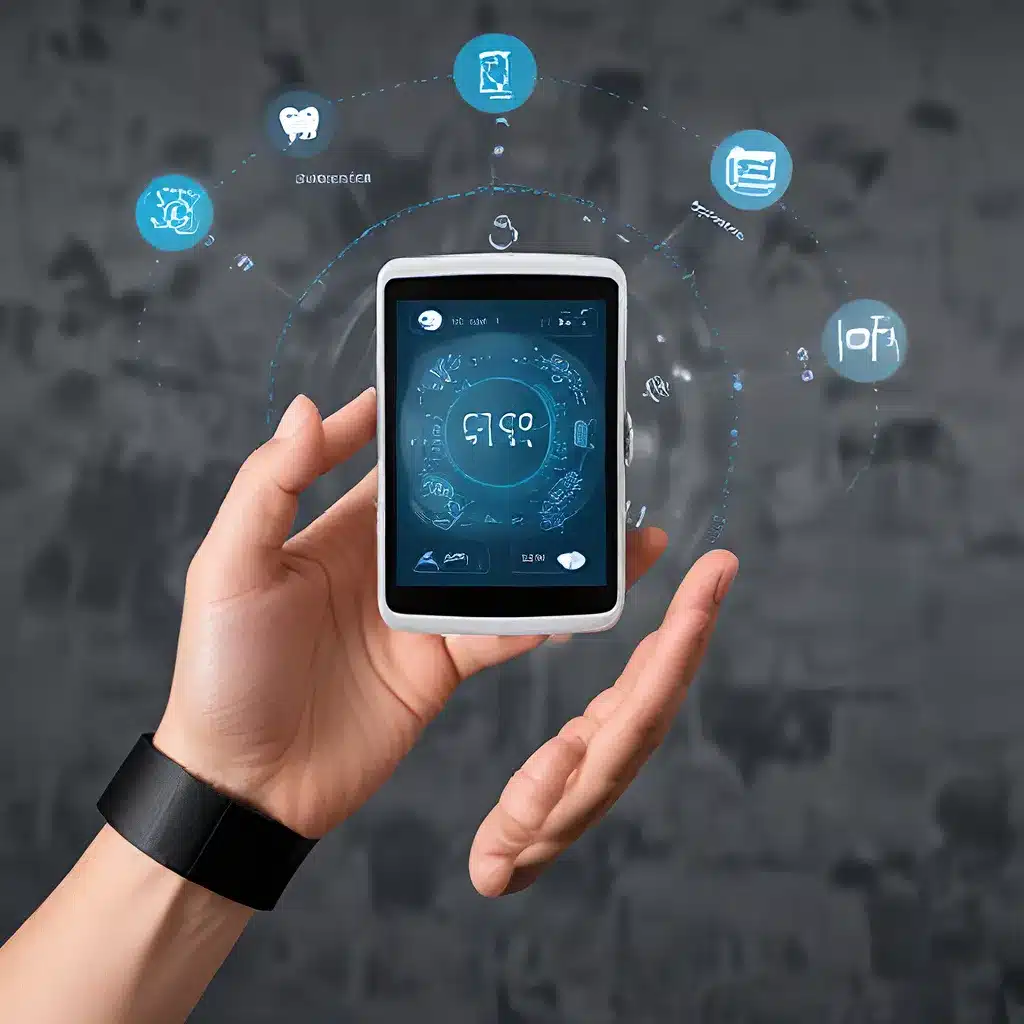
Unlocking the Power of Sensor Networks in IoT
As the Internet of Things (IoT) continues to revolutionize the way we interact with our environments, the role of sensor networks has become increasingly crucial. These interconnected systems of sensors, embedded in a wide range of devices and infrastructure, are the backbone of IoT, enabling the collection and exchange of vast amounts of data. However, the true potential of IoT applications lies not only in the data itself, but in how it is presented and utilized to enhance the user experience.
Innovative sensor interfaces are at the forefront of this transformation, empowering users to seamlessly interact with their IoT-enabled environments. By leveraging advanced sensor technologies and intuitive user interfaces, these interfaces are unlocking new levels of personalization, automation, and real-time responsiveness in IoT applications.
The Evolution of Sensor Interfaces in IoT
Sensor networks have undergone a remarkable evolution, moving beyond traditional data collection to become the foundation for interactive, user-centric IoT experiences. This progression has been driven by several key advancements:
-
Sensor Miniaturization: The continuous miniaturization of sensors has enabled their integration into an ever-expanding range of devices, from wearables to smart home appliances. This has opened up new opportunities for contextual data collection and seamless user interaction.
-
Multimodal Sensing: Sensor networks now encompass a diverse array of sensing modalities, including visual, audio, motion, and environmental sensors. This multidimensional data provides a richer understanding of user needs and preferences, enabling more personalized experiences.
-
Connectivity and Data Integration: The ubiquity of wireless communication protocols and the proliferation of cloud computing have allowed sensor networks to transmit and process data in real-time. This has facilitated the development of responsive, adaptive IoT systems that can anticipate and cater to user requirements.
-
Advancements in User Interfaces: The evolution of touchscreens, voice interfaces, gesture recognition, and augmented reality (AR) have transformed the way users interact with IoT devices. These intuitive, multimodal interfaces have paved the way for more seamless and engaging user experiences.
Enhancing the User Experience through Sensor Interfaces
Sensor interfaces are now playing a pivotal role in elevating the user experience in IoT applications across various industries. Let’s explore some of the key ways in which these innovative interfaces are transforming the landscape:
Personalization and Contextual Awareness
Sensor networks equipped with multimodal sensing capabilities can capture a wealth of user-specific data, such as preferences, habits, and environmental conditions. By leveraging this contextual information, IoT systems can deliver personalized recommendations, customized settings, and adaptive automation tailored to individual users’ needs and preferences.
Intuitive and Responsive Interactions
Sensor-based interfaces are revolutionizing the way users interact with IoT devices, moving beyond traditional input methods towards more natural and intuitive interactions. Voice commands, gesture controls, and touch-based interactions allow users to seamlessly control and manage their IoT-enabled environments without the need for complex menus or programming.
Enhanced Accessibility and Inclusivity
Innovative sensor interfaces are also paving the way for improved accessibility and inclusivity in IoT applications. Motion sensors, eye-tracking, and brain-computer interfaces can empower users with disabilities to interact with IoT systems in a more accessible and empowering manner, fostering greater independence and quality of life.
Automated Optimization and Efficiency
Sensor networks can continuously monitor environmental conditions, user behaviors, and system performance to optimize IoT applications for enhanced efficiency, energy savings, and cost-effectiveness. From smart home energy management to industrial process automation, these adaptive, data-driven systems can autonomously adjust to ensure optimal performance and user satisfaction.
Immersive and Engaging Experiences
The integration of augmented reality (AR) and virtual reality (VR) with sensor-based interfaces is creating highly immersive and engaging IoT experiences. Users can visualize, manipulate, and interact with digital information in a natural, intuitive manner, blurring the lines between the physical and digital worlds.
Addressing the Challenges of Sensor Network Security and Energy Management
As the adoption of IoT applications and sensor networks continues to grow, it is essential to address the critical challenges of security and energy management to ensure the long-term sustainability and trustworthiness of these systems.
Enhancing Sensor Network Security
Sensor networks face unique security risks due to their distributed nature, limited computational resources, and exposure to the physical environment. Comprehensive security measures, such as encryption, authentication, and intrusion detection, are crucial to protect sensor data and prevent unauthorized access to IoT systems.
Optimizing Energy Efficiency in Sensor Networks
The energy consumption of sensor networks is a critical concern, as battery-powered devices and distributed architectures can present significant challenges. Innovative energy harvesting techniques, low-power sensor design, and intelligent power management strategies are emerging as key solutions to extend the operational lifetime of sensor-based IoT applications.
Embracing the Future of Sensor-Driven IoT
As the Internet of Things continues to evolve, the role of sensor networks and innovative sensor interfaces will become increasingly vital in shaping the user experience of IoT applications. By leveraging the power of contextual data, intuitive interactions, and adaptive optimization, these technologies are poised to transform the way we interact with and derive value from our connected world.
Exploring the sensor network design, IoT applications, security protocols, and energy management strategies outlined in this article can help you stay ahead of the curve and harness the full potential of sensor-driven IoT to enhance user experiences in your own projects and initiatives. Dive deeper into this dynamic field by visiting the Sensor Networks and IoT website for more insightful resources and cutting-edge developments.